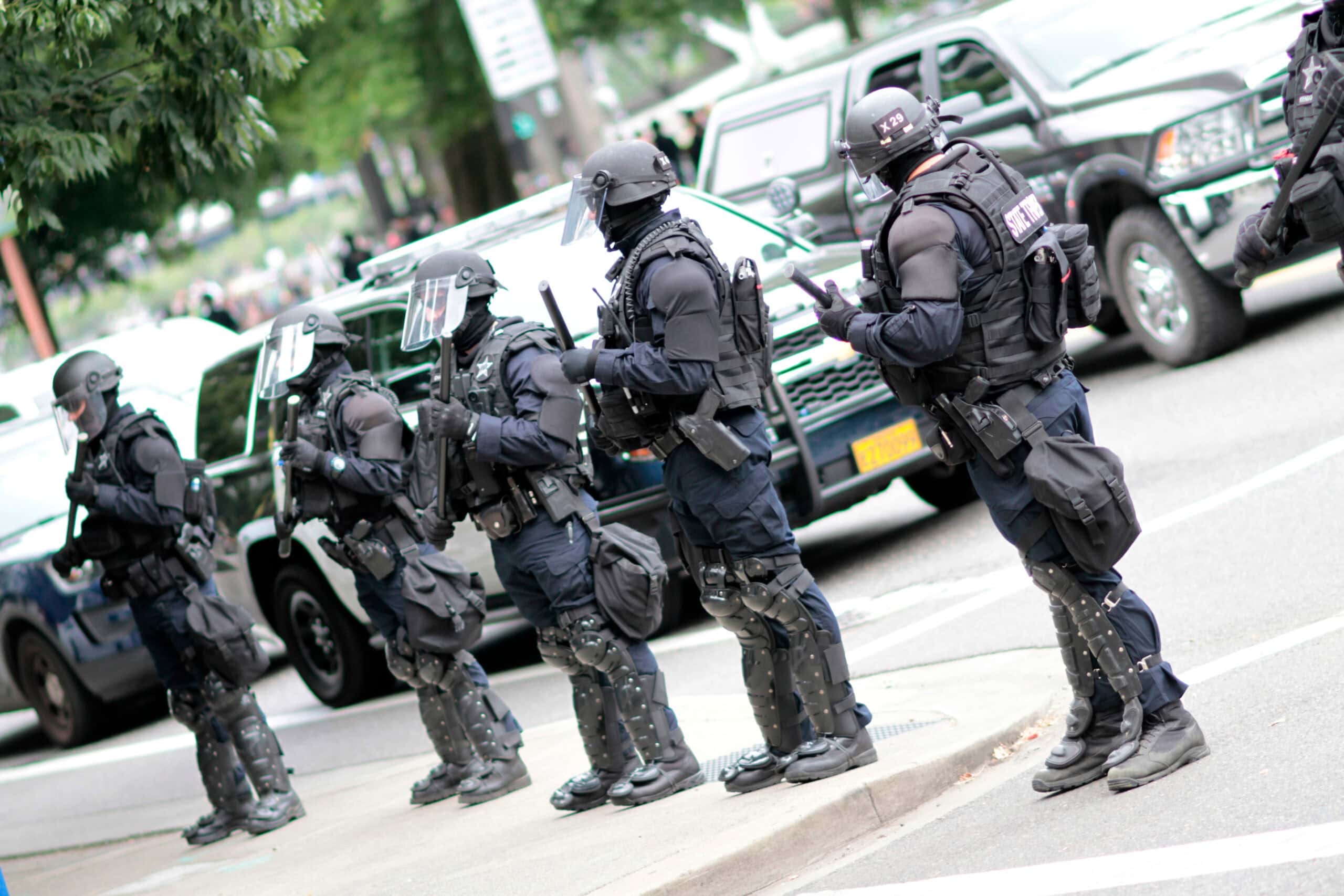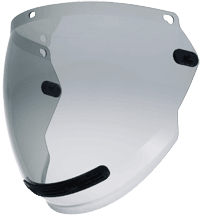In the dynamic and often perilous environment of riot control, maintaining clear visibility is of the utmost importance for law enforcement officers. The ability to see and accurately assess one’s surroundings directly impacts situational awareness, tactical decision-making, and officer safety. This blog post delves into the importance of clear visibility in riot control situations, the hazards that can impair vision, and the role of personal protective equipment (PPE) in mitigating these risks.
The Importance of Situational Awareness
Situational awareness is a major factor in effective law enforcement, especially in chaotic riot scenarios. It involves the continuous perception, comprehension, and projection of environmental elements and events. For officers on the front lines, this means being able to quickly identify potential threats, understand the intentions of individuals within the crowd, and anticipate the actions of both rioters and fellow officers. Clear visibility is essential for maintaining situational awareness, as it allows for accurate assessment of the evolving situation and facilitates effective communication and coordination.

Common Hazards to Vision in Riot Situations
Several hazards can impair an officer’s vision during riot control operations, potentially compromising their safety and effectiveness. These hazards include:
- Smoke and Tear Gas: The deployment of smoke grenades and tear gas is a common tactic in riot control to disperse crowds. However, these substances can create thick clouds that obscure vision and cause eye irritation. Prolonged exposure can lead to temporary blindness or severe discomfort, hindering an officer’s ability to navigate and respond to threats.
- Projectiles and Debris: Rioters may throw objects such as rocks, bottles, and other projectiles, which can cause direct eye injuries. Additionally, debris from broken glass and other materials can become airborne, posing further risks to an officer’s vision.
- Laser Pointers: The use of high-powered laser pointers by rioters has become a significant concern. These devices can temporarily blind officers, causing disorientation and making it difficult to perform their duties. Prolonged exposure to laser beams can also cause permanent eye damage.
- High-Intensity Lights: Strobe lights and other high-intensity light sources are sometimes used by rioters to disorient officers. These lights can cause temporary blindness, impair night vision, and induce headaches, significantly reducing an officer’s effectiveness in managing the situation.
- Liquids: Water, paint, or other substances can be thrown at officers to impair their visibility by coating their visors or goggles, obstructing their view. This tactic can hinder the officers’ ability to see and respond effectively, potentially compromising their ability to maintain control and ensure safety.
The Role of PPE in Protecting Officers’ Vision
Personal protective equipment is essential for safeguarding law enforcement officers’ vision in riot control scenarios. The following PPE items are particularly crucial:
- Ballistic Helmets with Visors: Modern ballistic helmets equipped with clear or tinted visors provide comprehensive protection against projectiles and debris. These visors are designed to withstand high-impact forces, ensuring that officers’ eyes remain protected while maintaining clear visibility.
- Gas Masks: Wearing gas masks is critical in protecting officers’ eyes from tear gas, pepper spray, and other chemical irritants used to disperse crowds. This helps prevent severe irritation, temporary blindness, and long-term vision damage.
- Tactical Goggles: Tactical goggles are an essential component of riot gear, offering a snug fit to prevent smoke, tear gas, and debris from entering the eyes. Anti-fog coatings and ventilation systems enhance visibility, even in harsh conditions.
- Laser Protective Eyewear: Specialized eyewear designed to filter out specific wavelengths of light can protect officers from the harmful effects of laser pointers. These specialty lenses reduce the risk of temporary or permanent eye damage caused by laser exposure.
- Face Shields: Transparent face shields attached to helmets provide an additional layer of protection against projectiles and high-intensity lights. They offer full-face coverage, ensuring that officers can maintain situational awareness without compromising safety. Face shields should also come equipped with a liquid seal or barrier at the shield-helmet interface to prevent liquid pass-through.
- Riot Body Shields: Transparent handheld shields provide protection against projectiles and physical attacks while maintaining visibility. The transparency of the shield allows officers to see through it clearly, ensuring optimal vision and situational awareness.
In the high-stakes environment of riot control, maintaining clear visibility is essential in protecting both law enforcement officers as well as the individuals in the crowd. The hazards present in such situations, from smoke and debris to laser pointers and high-intensity lights, pose significant risks to vision and overall safety. By utilizing appropriate PPE, officers can mitigate these risks, ensuring that they remain effective, aware, and safe while managing volatile crowds. The right PPE not only protects against physical harm but also preserves the critical situational awareness needed to uphold public safety and order.
Tactical PPE by Paulson Manufacturing
Paulson is an industry leader in manufacturing the highest quality transparent tactical PPE on the market, including face shields for ballistic combat helmets, handheld riot shields, tactical goggles, and laser & high intensity light protection. Made in the USA and designed with comfort and safety in mind, our riot control PPE stands up to the many hazards present in riot situations, ensuring law enforcement officers can do their jobs effectively and get home safely.
To learn more about ensuring optimal visibility in a riot control situation, please contact us today.


